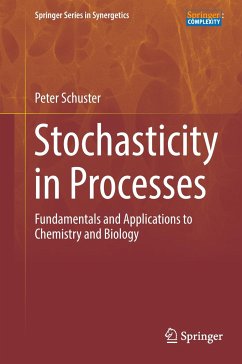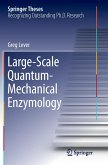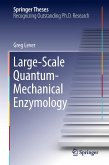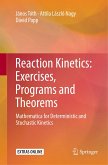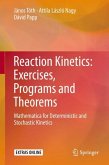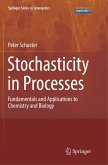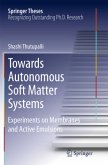This book has developed over the past fifteen years from a modern course on stochastic chemical kinetics for graduate students in physics, chemistry and biology. The first part presents a systematic collection of the mathematical background material needed to understand probability, statistics, and stochastic processes as a prerequisite for the increasingly challenging practical applications in chemistry and the life sciences examined in the second part.
Recent advances in the development of new techniques and in the resolution of conventional experiments at nano-scales have been tremendous: today molecular spectroscopy can provide insights into processes down to scales at which current theories at the interface of physics, chemistry and the life sciences cannot be successful without a firm grasp of randomness and its sources. Routinely measured data is now sufficiently accurate to allow the direct recording of fluctuations. As a result, the sampling of data and the modelingof relevant processes are doomed to produce artifacts in interpretation unless the observer has a solid background in the mathematics of limited reproducibility.
The material covered is presented in a modular approach, allowing more advanced sections to be skipped if the reader is primarily interested in applications. At the same time, most derivations of analytical solutions for the selected examples are provided in full length to guide more advanced readers in their attempts to derive solutions on their own. The book employs uniform notation throughout, and a glossary has been added to define the most important notions discussed.
Recent advances in the development of new techniques and in the resolution of conventional experiments at nano-scales have been tremendous: today molecular spectroscopy can provide insights into processes down to scales at which current theories at the interface of physics, chemistry and the life sciences cannot be successful without a firm grasp of randomness and its sources. Routinely measured data is now sufficiently accurate to allow the direct recording of fluctuations. As a result, the sampling of data and the modelingof relevant processes are doomed to produce artifacts in interpretation unless the observer has a solid background in the mathematics of limited reproducibility.
The material covered is presented in a modular approach, allowing more advanced sections to be skipped if the reader is primarily interested in applications. At the same time, most derivations of analytical solutions for the selected examples are provided in full length to guide more advanced readers in their attempts to derive solutions on their own. The book employs uniform notation throughout, and a glossary has been added to define the most important notions discussed.
"This book is a much needed contribution to the foundations of chemistry and biology. Its focus is timely, and it provides its readers with a well-rounded and well-written summary of stochasticity with a view toward chemistry and biology. ... The mathematical prerequisites are kept at the undergraduate level and the book is designed to be as self-contained as possible. Key equestions are derived unless too much mathematical effort would be required." (Clemens F. Heitzinger, Mathematical Reviews, April, 2018)
"There are 585 references, a notation index, an author index and a subject index. The book is extremely well produced. Without any reservation, I do not hesitate to say this is an exceptional piece of work." (Marius Iosifescu, zbMATH 1359.60006, 2017)
"There are 585 references, a notation index, an author index and a subject index. The book is extremely well produced. Without any reservation, I do not hesitate to say this is an exceptional piece of work." (Marius Iosifescu, zbMATH 1359.60006, 2017)

